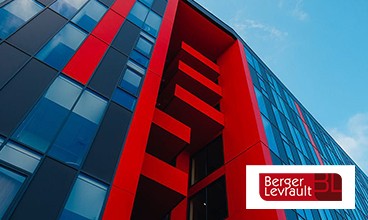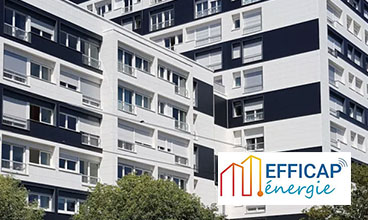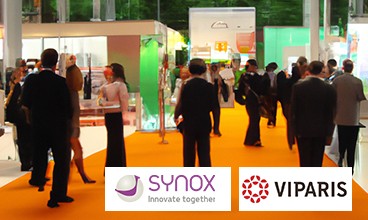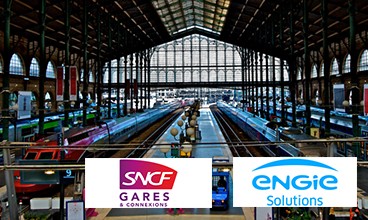
Energy transition for buildings: the impact of the BACS Decree
The BACS Decree imposes strict standards for the energy automation of commercial buildings. Find out more about its requirements.
Whatever the type of building you have to manage – commercial, collective, public or industrial – Adeunis connected solutions help you to optimise the management of these buildings. Whether the aim is to make them more economical, more comfortable or even more attractive.
Whether you’re an operator, maintenance, energy or facility management professional, the IoT will help you achieve the objectives you’ve set with your customers.
The success of these missions depends on knowing, monitoring and controlling the correct operation of the equipment and resources required by the building.
IoT solutions enable you to collect data on the life and operation of the building. Data is the key element, essential for getting to know your building before taking any action to improve its energy performance, technical performance or comfort.

Improving energy efficiency
By monitoring and analysing
consumption and the operation of technical equipment, and adapting their use to the real needs of users.
of users.

Reduce maintenance costs
Our IoT solutions enable you to better control the energy consumption of your buildings’ equipment and optimise your maintenance processes to cut costs.

Ensure user satisfaction
By closely monitoring the development of the building, optimising the associated services and studying comfort indicators, you will be helping to improve the well-being and satisfaction of building users.

Meet regulatory targets
By taking action to improve the way buildings are used, you are responding to
the challenges of the Tertiary Sector Decrees, the BACS Decree and the law on Indoor Air Quality.
Our IoT solutions can be used in all types of buildings: offices, collective housing, healthcare establishments, industrial buildings, schools, shops, etc.

Office buildings

Collective housing

Health establishment

Industrial buildings

Schools

Commercial buildings

Accommodation and catering
A smart building is a building that integrates advanced technologies to monitor, control and optimise its operations. It uses sensors, energy management systems, connected devices and software to collect data in real time, automate processes and improve the overall efficiency of the building.
The main objective of a smart building is to improve building management, optimise energy consumption, reduce operating costs, increase occupant comfort and enhance building safety and security. It also provides valuable data for strategic decision-making in property management.
Smart buildings use technologies such as the Internet of Things (IoT), artificial intelligence (AI), data analysis and connectivity to create an intelligent ecosystem within the building. These technologies make it possible to monitor and control various aspects of the building, such as lighting, air conditioning, heating, ventilation, security, building access and space management.


Use IoT sensors to retrieve essential building operating data

Use the data collected to :


Here you’ll find case studies of connected buildings, examples of solutions and advice on how to improve the energy performance, maintenance and comfort of your connected buildings.

The BACS Decree imposes strict standards for the energy automation of commercial buildings. Find out more about its requirements.

Find out how Berger-Levrault is using IoT to reduce energy consumption and improve employee comfort.

Find out how EFFICAP is reducing its customers’ heating costs in multi-family housing with Adeunis IoT sensors.

Do you want to digitise your office buildings and make them more economical, comfortable and attractive? Discover our IoT solutions…

Find out how FDI Habitat, a social housing operator, is using the IoT to reduce energy consumption in its homes.

Find out how VIPARIS, a convention and exhibition venue manager, is monitoring air quality at a dozen major event venues in Paris.

The “Smart Station” project aims to make stations connected, with the help of IoT, by creating centralized supervision of equipment…
To meet your Smart Building needs, Adeunis offers a range of connected sensors and services to support you at every stage of your IoT digitalization project.
Our multi-technology solutions can be adapted to suit your needs: LoRaWAN, Sigfox, 5G: LTE-M1 or NB-IoT.
A smart building is characterised by the integration of advanced technologies to monitor, control and optimise building operations. It uses sensors, energy management systems, connected devices and software to collect data in real time, automate processes and improve the overall efficiency of the building.
The benefits of a smart building are numerous. It can improve energy efficiency, reduce operating costs, optimise the use of resources, increase occupant comfort, facilitate predictive maintenance, enhance building safety and security, and provide valuable data for strategic decision-making.
Smart buildings have applications in a variety of sectors, including offices, hospitals, hotels, shopping centres, university campuses, industrial facilities and residential buildings. They are used to optimise energy management, resource management, lighting, climate control, space management and other aspects of buildings.
Smart buildings use a variety of sensors and devices to collect data. Commonly used sensors include temperature, humidity, brightness, motion, presence, air quality and energy consumption sensors. Devices include intelligent thermostats, actuators, smart meters, lighting control systems, etc.
Smart buildings enhance the occupant experience by providing greater comfort, improved air quality and enhanced connectivity. Occupants can benefit from adaptive lighting, personalised temperature controls or customised services based on individual preferences. Smart buildings can also facilitate communication between occupants and building managers to report problems and request services.
Smart buildings improve energy efficiency in a number of ways. Sensors collect data on the building’s energy consumption and identify areas where savings can be made. For example, lighting and air conditioning can be adjusted according to the presence of occupants. In addition, energy management systems can monitor and optimise energy consumption in real time, reducing waste and costs.
A smart building is characterised by the integration of advanced technologies to monitor, control and optimise building operations. It uses sensors, energy management systems, connected devices and software to collect data in real time, automate processes and improve the overall efficiency of the building.
The benefits of a smart building are numerous. It can improve energy efficiency, reduce operating costs, optimise the use of resources, increase occupant comfort, facilitate predictive maintenance, enhance building safety and security, and provide valuable data for strategic decision-making.
Smart buildings have applications in a variety of sectors, including offices, hospitals, hotels, shopping centres, university campuses, industrial facilities and residential buildings. They are used to optimise energy management, resource management, lighting, climate control, space management and other aspects of buildings.
Smart buildings use a variety of sensors and devices to collect data. Commonly used sensors include temperature, humidity, brightness, motion, presence, air quality and energy consumption sensors. Devices include intelligent thermostats, actuators, smart meters, lighting control systems, etc.
Smart buildings enhance the occupant experience by providing greater comfort, improved air quality and enhanced connectivity. Occupants can benefit from adaptive lighting, personalised temperature controls or customised services based on individual preferences. Smart buildings can also facilitate communication between occupants and building managers to report problems and request services.
Smart buildings improve energy efficiency in a number of ways. Sensors collect data on the building’s energy consumption and identify areas where savings can be made. For example, lighting and air conditioning can be adjusted according to the presence of occupants. In addition, energy management systems can monitor and optimise energy consumption in real time, reducing waste and costs.
Our team is here to help you. If you have any questions or encounter any problems when using our application, please don’t hesitate to contact us. We’re here to solve any problems you may encounter and provide you with the best possible experience.
expertise to support you, from the diagnosis to the implementation of your solution
Try out a new interactive experience.
Immerse yourself in an office building and discover the real-life applications of our connected sensors.
Take this virtual tour of a 1000m2 office building and see our sensors in action.
Take our virtual tour and walk through a building to discover real-life applications for our sensors.
